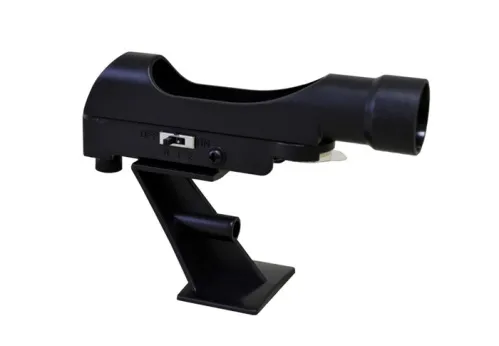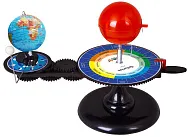Bresser National Geographic Dob 114/500 Telescope
Newton's telescope. Primary mirror diameter (aperture): 114mm. Focal length: 500mm
| Product ID | 67546 |
| Brand | Bresser GmbH, Germany |
| Warranty | 2 years |
| EAN | 4007922000374 |
| Package size (LxWxH) | 30x30x56 cm |
| Shipping Weight | 5.256 kg |
With its 114mm aperture, the Bresser National Geographic Dob 114/500 telescope collects so much light that even faint objects become visible, and you can see more details of the Moon and planets. This Newtonian reflector is installed on a Dobsonian alt-azimuth mount that makes it very compact and easy to use. The telescope sets up quickly, with no assembly required, so you can easily take it to your favorite night-sky observation location. The red dot finder makes locating objects very simple. The compass, built into the base of the mount, simplifies orientation in the night sky. This telescope will allow you to see dozens of globular clusters, planetary and diffuse nebulae, all objects of the Messier catalog, and the brightest objects from the NGC catalog.
The kit includes:
- Bresser National Geographic Dob 114/500 Telescope
- Eyepieces: 6mm, 20mm
- 2x Barlow lens
- Moon filter
- Red Dot finderscope
- User manual and 5-year warranty
| Product ID | 67546 |
| Brand | Bresser GmbH, Germany |
| Warranty | 2 years |
| EAN | 4007922000374 |
| Package size (LxWxH) | 30x30x56 cm |
| Shipping Weight | 5.256 kg |
| Optical design | reflector |
| Optical scheme | Newtonian |
| Primary mirror diameter (aperture), mm | 114 |
| Focal length, mm | 500 |
| Magnification, x | 25 — 167 |
| Eyepieces | 20mm, 6mm |
| Barlow lens | 2x |
| Finderscope | red dot |
| Filters included | lunar filter (supplied with an eyepiece in package) |
| Telescope control | manual |
| Mount | Dobsonian |
| Telescope installation platform | alt-azimuth |
| User level | beginners |
| Observed object | deep-sky objects |











